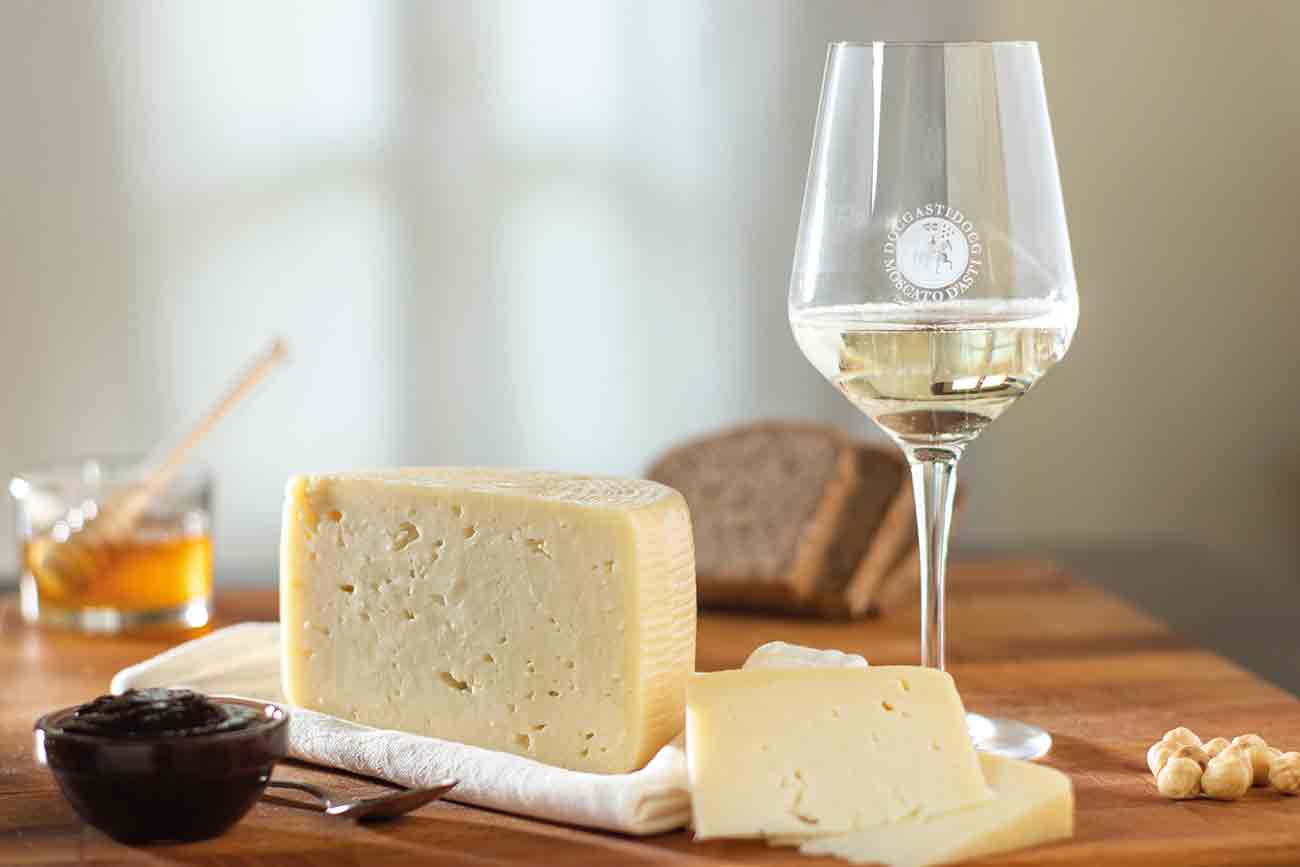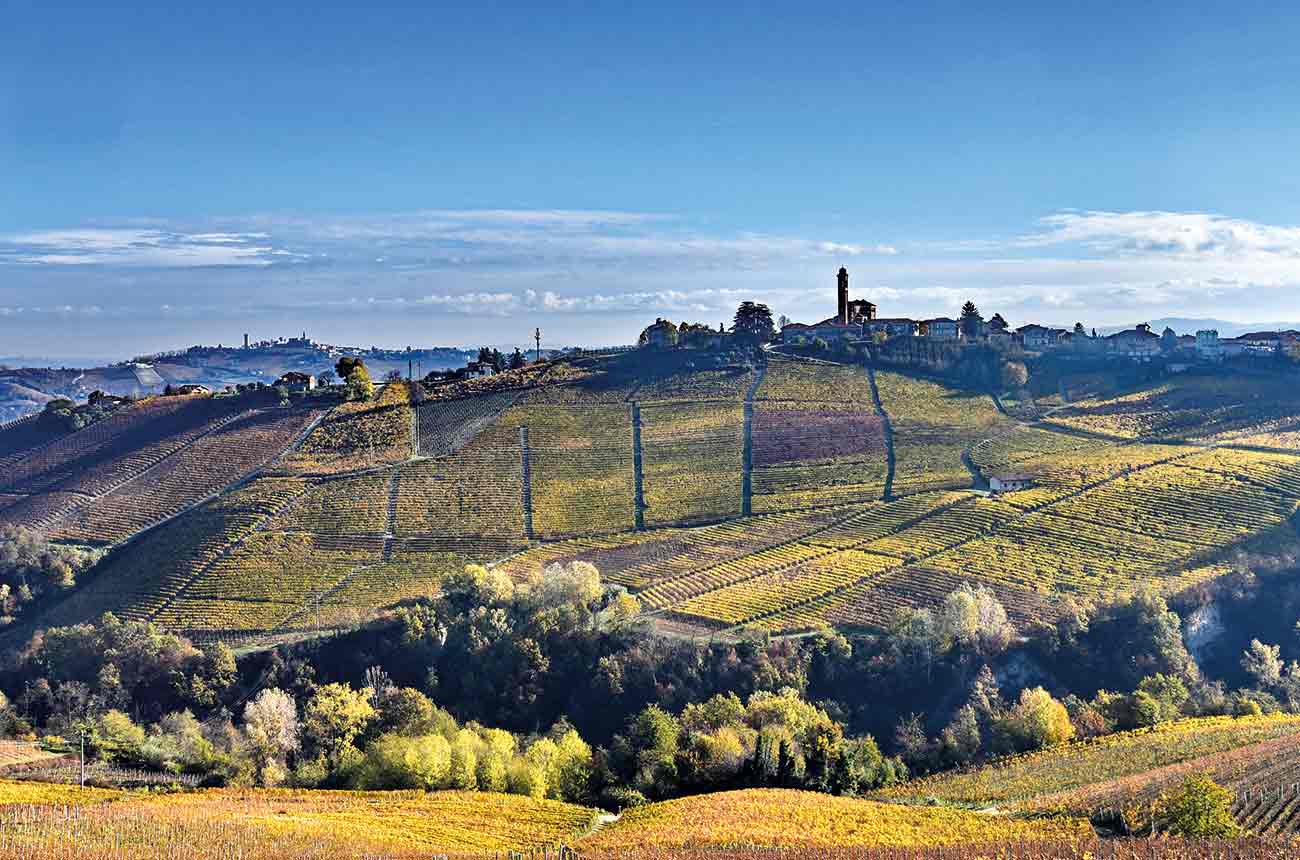The Moscato d’Asti DOCG terroir (which coincides with that of its ‘siblings’ Asti DOCG and Asti Secco DOCG) includes 51 municipalities straddling the provinces of Cuneo (with the most vineyards), Asti and Alessandria, in the Italian region of Piedmont.
The most striking landscapes are among the hills around Santo Stefano Belbo in Cuneo, where Moscato vines cling to spectacular amphitheatres of stone terraces, winding among the tortuous curves of the steep slopes; then around Calosso in Asti, or on the rolling hills between Mango and Castiglione Tinella: this is perhaps Moscato’s most beautiful terroir landscape.

The same varietal, Moscato Bianco, in the same zones, produces the three different DOCG wines. Let’s focus on Moscato d’Asti DOCG. In the past it was made only by small growers, who would make Moscato d’Asti for their family and friends; an everyday wine to drink with a snack in the fields, or dip your bread into for breakfast. In more modern times, it has grown up to be a much more elegant food wine.
Moscato d’Asti: its characteristics and evolution
In the early 1970s, Romano Dogliotti, former president of the Asti DOCG and Moscato d’Asti DOCG Consortium, was the first producer to bottle Moscato d’Asti. Back then it was made without the help of technology, using cotton filters known as ‘Dutch sacks’, and would often re-ferment in the bottle causing the cork to pop out. Today, the must is transferred into pressurised stainless-steel tanks before fermentation, where the sugars are partially fermented until the alcohol content reaches around 5.5% ABV.
Moscato d’Asti is a sweet wine, but its sweetness is never overpowering, instead blending with the dash of freshness produced by its slight effervescence. While not technically a sparkling wine, it does retain an unmistakable vivacity and has a low alcohol content. It comes bottled with a standard still-wine cork, unlike its two sparkling ‘sisters’, which have the classic mushroom-shaped cork.
Of all the Moscato varieties, the aromatic Moscato Bianco grape has the most aristocratic finesse, with a distinctive fragrance and flavour. It’s a “grape-wine” that preserves the full fragrance of the grape type involved and produces a product that is essentially halfway between drinking the fruit and the wine.
Moscato d’Asti is delicious, simple and unpretentious. It is straight-to-the-point and striking for its easy, natural style. Lively and carefree, it makes a fun and joyful companion for more informal get-togethers and celebrations. Christmas is around the corner, and Moscato d’Asti’s perfect pairing is undoubtedly with sweet treats: fruit tarts, patisserie, biscuits, and ice cream, as well as a fruit salad or strawberries.

The wine critics who were the first to establish oeno-gastronomy in Italy, Luigi Veronelli and Mario Soldati, would happily drink Moscato d’Asti throughout a meal, even with the characteristic local aperitif food: thick-sliced salami.
Drink it on its own to luxuriate in its delicate scents of lime blossom, orange blossom, elderflower, sage, acacia and lemon blossom; or mix it into a cocktail, as young people are doing all over the world. Either way, scrumptiousness is guaranteed.

Hillside micro-sites for Moscato d’Asti
In local Piedmontese tradition, the term ‘sorì’ refers to a very steep piece of land, usually with a gradient of more than 40%. Of the 9800 ha covered by the three DOCGs, 336 are sorì with gradients of 50%, and 1084 have gradients of more than 40%. Here, everything must be done by hand: a heroic kind of viticulture. Around three to five times more hours or labour are needed to manage these plots, compared to those situated on the plain or in the low hills.
The sorì where Moscato was born years ago are 400 metres above sea level; and this is where the oldest vineyards are to be found, typically more than 45 years old. Life in the sorì is hard, but at least nowadays technology is there to help.
Santo Stefano Belbo in Cuneo province has the most hectares with gradients above 50%. This is the hometown of the famous writer Cesare Pavese: “I see nothing but hills, they fill my sky and my land,” he wrote.
www.astidocg.it
Instagram: @consorzio.asti.docg
Favebook: @Consorzio dell’Asti DOCG
Linkedin: Consorzio Asti e Moscato d’Asti DOCG
#ruralglam #asti #moscatodasti #docg #italianfinewine #piedmont








